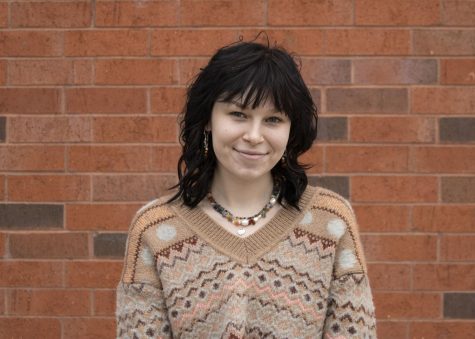Climate change and its effect on Alaskan Natives
Indigenous people’s places and practices are threatened by climate change
Climate change is affecting everyone in some way or another.
However, it is most prevalent in communities of color due to the impacts of environmental racism.
People of color are more vulnerable to heatwaves, extreme weather, environmental depletion and subsequent labor market dislocations.
One of many communities directly targeted by climate change is Indigenous peoples.
Of the 567 tribes that are recognized in the United States, roughly 40 percent live in Alaska Native communities.
The Arctic is warming up twice as fast as any other place in the world, with winter temperatures rising over 43 F over the past 50 years.
The increase in temperature causes ice caps, glaciers and permafrost to melt and thaw, threatening Native villages due to a series of erosion, flooding and destruction of infrastructures.
The melting leads to decreased access to hunting and fishing areas, which means many need help accessing food sources.
Nature is respected deeply in Native American culture. Many believe the Earth to be the mother of all things, making everything and everyone brothers and sisters. So a loss of ties with nature is detrimental to one’s spiritual and mental health.
“This can then result in lost opportunity for the social components of these activities, including reduced community connection, less food and knowledge sharing and diminished relationship building,” according to The National Climate Assessment.
These climate-driven changes affect water quality as well. Warmer weather means more evaporation, which allows more water to be held in the air, thus setting off heavier rainfall and flooding, decreasing water quality and increasing health risks.
There would also be effects on their food security, as some communities use ice cellars or houses to store their food. When permafrost thaws, food spoilage and sickness may become more common without other storage options.
Climate change is also forcing Native Alaskans to move and relocate from their ancestral homes.
Patricia Cochran, executive director of the Alaska Native Science Commission said, “For communities who have been there for thousands of years, it’s a difficult decision to leave everything. It’s not only physical exhaustion but the mental exhaustion and trauma that comes along with all those things.”
In order to find solutions we must learn from Indigenous people who have survived against ever-accumulating crises, argues Jackie Qataliña Schaeffer, the director of climate initiatives for the Alaska Native Tribal Health Consortium.
Back in November, it was announced that through coordination with community leaders, 11 severely impacted Tribes will receive $115 million with investments from President Biden’s Bipartisan Infrastructure Law and Inflation Reduction Act to help with relocating and adaption.
Resolutions like this need to be recurring, not just when there is nothing left to do but throw money at the problem.
Climate change can’t be eliminated with money alone, but with ideas and strategies to combat and reduce our environmental impact.
There is no right answer, but there are answers to this problem that need to be addressed before it’s too late.
It should not take until it affects non-people of color or those with money/control to implement the change needed to save our planet.
Maxwell can be reached at maxwelbk4749@uwec.edu.

Bridget Maxwell is a fourth-year journalism and political science student, and this is her third semester on The Spectator staff. When she isn't writing for The Spectator, she is with friends sitting on the couch binging "Dance Mom's" or "It's Always Sunny in Philadelphia."

